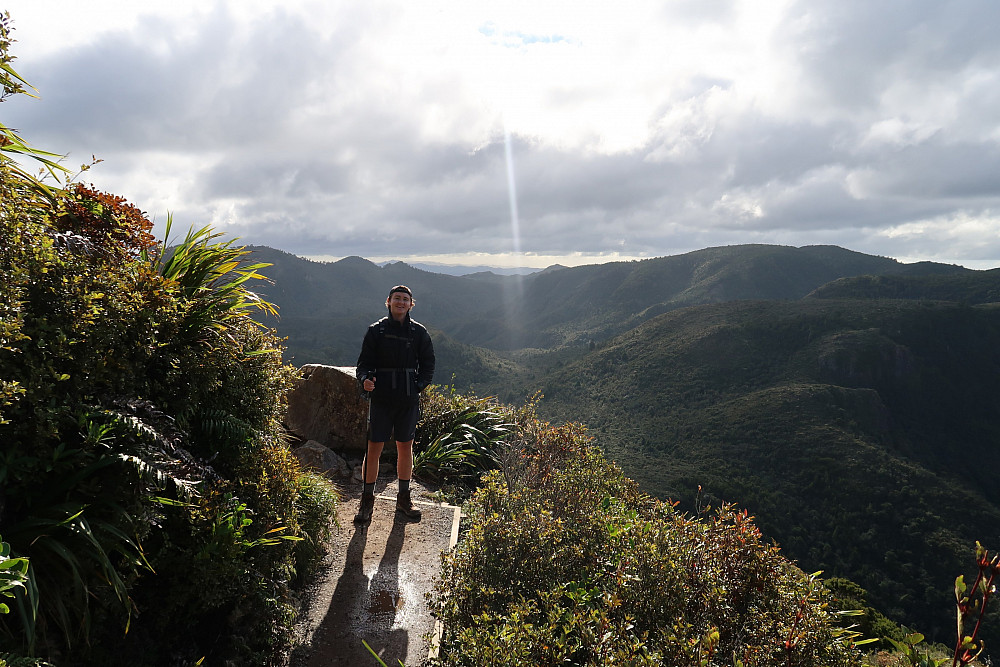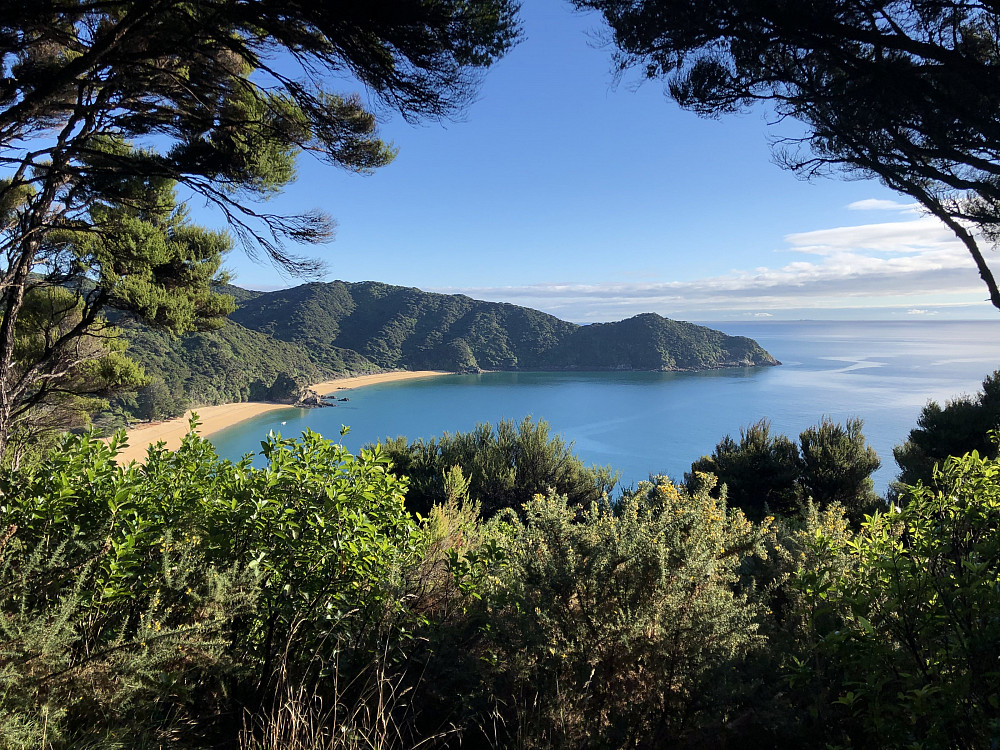News
A Journey to Remember
December 19, 2019
December 19, 2019
The Kaituna River, located within the Bay of Plenty region of New Zealand, is famous for its Tutea Falls and is known for some of the best whitewater rafting and kayaking in the world. Being a very popular destination, it can be a dangerous river to traverse in a tiny boat because of its lightning-fast current and class-five rapids. The rapids can smash kayakers into walls and rocks, and there is always the possibility of getting swept under the current. Navigating the river requires a considerable amount of expertise and most definitely a trusty guide.
For Alec McClure ’20, the experience of the river was quite the unexpected. Before setting course down the river, McClure’s guide requested that the group pull off to the side and look for a flower. Confused and a little annoyed as to why he had to get out of his kayak, McClure quickly got out and found the nearest flower right on the river bank.

In Maori culture, taniwha are spiritual beings that live in rivers, the sea, or deep caves. They are highly admired in New Zealand for being guardians who grant travelers safe passage through strong currents or dangerous waves. McClure’s confusion quickly dissipated after his tour guide explained that there was a taniwha living in the deep pool where their journey began. The group was instructed to pick up a small flower and paddle over to the small cave on the opposite side of the pool and place their flower down as an offering for safe passage through the rapids. Despite the killer current and the treacherous rocks they faced on their journey, McClure and the group reached their destination a few miles down the river unscathed.
“That small experience for me on the Kaituna River was incredible for me because that was so entirely different from anything I’ve ever done or really even conceptualized before,” McClure recalls.
A San Antonio, Texas, native finds himself halfway across the world
Coming into his first year at Southwestern University, McClure already had his mind set on studying abroad at some point during his college career. Having heard stories from his parents about their own experiences around the world, McClure intended to make the most out of high-impact experiences like studying abroad. “My dad served in the Peace Corps and lived in Honduras for two years working in agricultural studies, and he loved his time there,” McClure shares. “My mom has also been all over the place, whether it be places all across Europe, Australia, and New Zealand as well. So they have given me some pretty good insight into what to expect and planted it in my brain that seeing places outside the U.S. can definitely be special.”
But during his time at SU, McClure immersed himself in many different activities and organizations, temporarily making him question whether study abroad was in the cards. “As time went on, I began to love it more and more here, and I became very invested in academics, friends, and my extracurricular activities,” he says. “So there was a brief period of time where I asked myself, ‘Do I really want to leave or not?’” However, remembering the excitement his parents shared when describing their journeys around the world, McClure came around and realized what an opportunity going abroad would be.
Why New Zealand?
McClure got help from the Office of Intercultural Learning, whose staff walked him through all the normal processes students take when they are considering studying abroad. Like many other students, he worked diligently when it came to narrowing down the various site options he had, and the study-abroad staff provided guidance in terms of how certain programs could complement his academic studies and experiences on campus.
A communications major and environmental studies minor, McClure felt that an experience in New Zealand would be “a little bit off the beaten path” in terms of where people from Southwestern traditionally go when studying abroad. “I know people who had gone to London, Argentina, Washington, DC, and places like that and had an awesome experience,” he says. I just kind of thought New Zealand would be kind of unique aside from those experiences.”
At that point, McClure’s perception of New Zealand was quite similar to what most people would think of the country: a massive island with beautiful scenery, more times than not associated with the Lord of The Rings series. “It sounded like this incredible fantasy land that everyone marvels about, and I thought if I had the opportunity to go, why not just try and take it?” he recalls.
Cultural impact connected to classroom concepts
While many students study abroad to absorb the tourist attractions, sports, history, or food, such as they do in many places found in Europe, it quickly became apparent to McClure that an experience in New Zealand was primarily focused on nature and the outdoors. “Everything was based around nature,” says McClure. “I had the opportunity to do many outdoor activities, such as camping, hiking, and things like that, which was right up my alley.”
During his initial experience, despite the vast difference in scenery compared with the relatively flat terrain of Georgetown, Texas, the difference in culture was not that far off from what you would see in the U.S. So for McClure, there was no immediate culture shock. “I didn’t really have anything major that jumped out at me,” he remembers. “It was pretty similar to the States. [In New Zealand,] I lived in normal suburbia [and] made a 15-minute commute to a fairly large university like we have here in the U.S.” The contrast between institutions, however, was significant: With a total enrollment of 41,953 and an average class size of 200 students, Auckland University was vastly different from the small liberal-arts environment of Southwestern.
“I had the opportunity to do many outdoor activities, such as camping, hiking, and things like that, which was right up my alley.”
Over time, McClure gradually learned more and more about the Maori people, the indigenous population of the country, and their culture. Understanding how closely Maori culture was linked with New Zealand culture as a whole was an incredible experience for McClure. His study-abroad leader was Maori, so the Southwestern undergrad had the opportunity to learn firsthand just how important the culture was to the country. Looking back on his time on the Kaituna River, he recalls how his tour guide was not even Maori, yet her knowledge of the taniwha and encouragement of the tourists to pay respect to the local native culture showed how integrated Maori culture is in New Zealand. Meanwhile, while studying at Auckland University, McClure had the opportunity to take courses focused on Maori Studies and Pacific Studies, in which he got to connect his cultural experiences to curriculum in the classroom. “I got the chance to recognize the similar issues that take place here in the U.S. and all across the world,” he reflects.
New Zealand’s breathtaking scenery
Being an avid hiker and outdoorsman, McClure was sure to get his fill of the various hikes and outdoor experiences the country had to offer. New Zealand is home to 12 different parks across the country, and within these parks, there are “Great Walks,” which are trails maintained by the Department of Conservation. Typically embarking on multiday backpacking trips, hikers from all over the world walk through some of the most beautiful scenery New Zealand has to offer. These tracks take hikers through a variety of terrain, such as coastlines, mountains, forests, beaches, and much more.

During his time in the country, McClure had the opportunity to do four of these walks. He started with the Milford Track and the Milford Sound area, located in Fiordland National Park on the South Island. Taking around three days, this track takes travelers through breathtaking valleys carved from glaciers, temperate rainforests, and cascading waterfalls. After the Milford Track, McClure began his second journey, following the Tongariro Northern Circuit located in Tongariro National Park. This four-day hike includes Mount Ngauruhoe, the Emerald Lakes, and many more captivating views. Other exhilarating places McClure had the opportunity to visit were Roy’s Peak, which is one of the highest peaks in New Zealand; the Cook Islands, a small Pacific cluster of islands off the coast of New Zealand; Lake Wanaka; and many more.
Looking back on the experience
“Really everything I did there was incredibly invaluable, not just in the classroom,” McClure comments. “But looking back, it seems like everything I did, everyone I met, and all the places I went to [were] some sort of learning experience.”
“Looking back, it seems like everything I did, everyone I met, and all the places I went to [were] some sort of learning experience.”
McClure says he learned a tremendous amount from not only his studies at Auckland University but also random occurrences that turned into great experiences and the incredible people he met along the way. Looking forward, McClure’s time in New Zealand has helped shape what he’s considering for his future. “It gave me a taste of what else is out there,” he remarks. “Sounds very cliché, but what else is out there outside of the U.S. or San Antonio or Georgetown and Southwestern? So now that I’ve kind of seen a little bit of one area, I’m definitely more curious to see what’s my next adventure.”
McClure has also come to terms with how privileged and fortunate he is for the opportunity to not only study abroad but also to attain such a diverse and meaningful education. “You only have so much time to do this because after a while, life starts expecting different things from you, and you’re gonna have to get some sort of job or something else in life,” he observes. “There’s only so much time to be able to this sort of thing, and it seemed that while I was curious to learn more about the world and myself, doing it while I was younger at Southwestern was the best opportunity for me.”
























